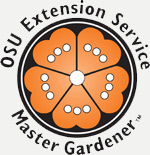Home
Who we are
What we do
Resources
- Online Resources
- Frequently Asked Questions
- OSU Gardening Encyclopedia
- OSU Gardening Calendar
- 10–Minute University™
Community & Urban Horticulture
MG Community
- MG Referral Forum
- Moodle
- Newsletter
- Forms
- Office Info Binder
- Contacts
- CERVIS Instructions
- CERVIS Event Registration
- CERVIS Administrator Login

OSU Gardening Calendar
October
Planning
- If needed, improve soil drainage needs of lawns before rain begins.
- Register to become an OSU Master Gardener volunteer with your local Extension office. For more information, download this publication (PDF).
Maintenance and Clean Up
- Drain or blow out your irrigation system, insulate valve mechanisms, in preparation of winter.
- Recycle disease-free plant material and kitchen vegetable and fruit scraps into compost. Don't compost diseased plants unless you are using the "hot compost" method (120° to 150°F).
- Use newspaper or cardboard covered by mulch to discourage winter and spring annual weeds or remove a lawn area for conversion to garden beds. For conversion, work in the paper and mulch as organic matter once the lawn grass has died.
- Clean and paint greenhouses and cold frames for plant storage and winter growth.
- Harvest sunflower heads; use seed for birdseed or roast for personal use.
- Dig and store potatoes; keep in darkness, moderate humidity, temperature about 40°F. Discard unused potatoes if they sprout. Don't use as seed potatoes for next year.
- Harvest and immediately dry filberts and walnuts; dry at 95° to 100°F.
- Ripen green tomatoes indoors. Check often and discard rotting fruit.
- Harvest and store apples; keep at about 40°F, moderate humidity.
- Place mulch over roots of roses, azaleas, rhododendrons and berries for winter protection.
- Trim or stake bushy herbaceous perennials to prevent wind damage.
- To suppress future pest problems, clean up annual flower beds by removing diseased plant materials, overwintering areas for insect pests; mulch with manure or garden compost to feed the soil and suppress weeds.
- Cover asparagus and rhubarb beds with a mulch of manure or compost.
- Clean, sharpen and oil tools and equipment before storing for winter.
- Store garden supplies and fertilizers in a safe, dry place out of reach of children.
- Prune out dead fruiting canes in raspberries.
- Western Oregon: Train and prune primocanes of raspberry.
- Western Oregon: Harvest squash and pumpkins; keep in dry area at 55° to 60°F.
- Western Oregon: If necessary (as indicated by soil test results) and if weather permits, spade organic material and lime into garden soil.
- Central/eastern Oregon: Prune evergreens.
Planting/Propagation
- Dig and divide rhubarb. (Should be done about every 4 years.)
- Plant garlic for harvesting next summer.
- Propagate chrysanthemums, fuchsias, geraniums by stem cuttings.
- Save seeds from the vegetable and flower garden. Dry, date, label, and store in a cool and dry location.
- Plant ground covers and shrubs.
- Dig and store geraniums, tuberous begonias, dahlias, gladiolas.
- Pot and store tulips and daffodils to force into early bloom, indoors, in December and January.
Pest Monitoring and Management
- Monitor landscape plants for problems. Don't treat unless a problem is identified.
- Remove and dispose of windfall apples that might be harboring apple maggot or codling moth larvae.
- Rake and destroy diseased leaves (apple, cherry, rose, etc.), or hot compost diseased leaves.
- Spray apple and stone fruit trees at leaf fall to prevent various fungal and bacterial diseases. Obtain a copy of Managing Diseases and Insects in Home Orchards (EC 631) from your local Extension office.
- If moles and gophers are a problem, consider traps.
- Western Oregon: Control fall-germinating lawn weeds while they are small. Hand weeding and weeding tools are particularly effective at this stage.
Houseplants and Indoor Gardening
- Early October: Reduce water, place in cool area (50-55°F) and increase time in shade or darkness (12-14 hours) to force Christmas cactus to bloom in late December.
- Place hanging pots of fuchsias where they won't freeze. Don't cut back until spring.
- Western Oregon: Check/treat houseplants for disease and insects before bringing indoors.
Download a PDF of the October Calendar for easy printing.
Updated September 10, 2009.
Problems, questions, or suggestions? Contact: webmaster@metromastergardeners.org

